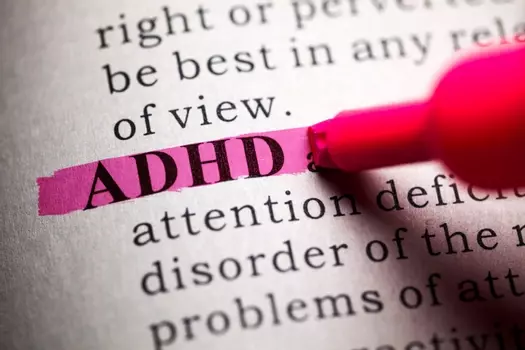An ADHD Cheatsheet
Being diagnosed as ADHD (or feeling that you meet the criteria, but are lacking a formal diagnosis) can open up a minefield of complicated terminology and options. Author Kat Brown gives us this cheatsheet to the common terms, taken from her book It’s Not a Bloody Trend.
Types of ADHD and typical symptoms
Hyperactive-impulsive: The ‘classic’ idea of ADHD and the least common in adults: impulsive behaviour, risk-taking, chronic impatience, restlessness and interrupting.
Inattentive: Formerly known as ADD until researchers found that hyperactivity manifests internally. Easily distracted, has difficulty following instructions and completing tasks, has racing thoughts and rumination, and often mislays things.
Combined: A delightful cocktail of the two; 85 per cent of adults with ADHD are diagnosed with combined type.
Treatment recommendations
A three-pronged approach of medication, general therapy and behavioural therapy (ADHD coaching), with support from lifestyle factors: regular exercise, nutritious meals, good sleep hygiene, time spent in nature, limiting alcohol, nicotine and caffeine, healthy work and relationships.
Types of medications
Stimulants (methylphenidate and amphetamine): These stimulate the amount of dopamine and norepinephrine to increase focus and working memory and manage impulse control. (Unmedicated people with ADHD may also find that ‘uppers’ such as caffeine or speed have little to no effect on their brain.)
Stimulant medication comes in instant-release and extended-release variants and effectiveness is noted immediately. Medication passes through the system quickly leaving no residue. ‘Ritalin’ is a familiar brand name, but medication is often packaged using the chemical name.
Non-stimulants (atomoxetine): Results may take several weeks to become evident, but this can be a stable way of achieving long-lasting effects, especially in patients with pre-existing addiction issues, or who experience significant side effects with stimulants.
Key terms
Comorbidity: Two or more conditions occurring at the same time.
Differential diagnosis: Where there is more than one possibility for your condition and your doctor must differentiate between them to establish which is correct.
Emotional regulation: The ability to manage feelings appropriately, sometimes known as rejection sensitivity or rejection sensitivity dysphoria, although these terms are not medically recognised.
Executive function: The mental skills that help you get things done, or ‘adulting’.
Hyperfocus: An intense concentration locked on to a particular activity, event or research topic.
Pre-Payment Certificate: This NHS godsend costs just over £100 for the year – compare that to just under a tenner a month for a single medication, let alone multiple – and you can pay by monthly direct debit. Order it online to cover your NHS and shared-care prescriptions.
Stimming: A term borrowed from the autistic community, this constant movement is a way that hyperactivity can manifest through fidget toys, chewing gum or repeated body movements, including self-harm.
Working memory: The brain system that temporarily stores and processes information for more complex tasks.
Diagnosis pathways
HEALTH SERVICE
- Your first step is to see your GP or primary care physician. You don’t need to have a file of evidence, but given the short time you have in an appointment, it would be useful to give them a clear idea of why you want to be put forward for an ADHD assessment.
- Your GP may immediately put you on the waiting list for assessment, or you may have a follow-up phone call with a mental health team to discuss this in a longer conversation.
PRIVATE
- A word-of-mouth recommendation from someone you trust is helpful. Your assessing consultant should also work in the NHS. The assessment appointment should be at least ninety minutes, not counting pre- and post-assessment questionnaires, to give your consultant time to properly take your history.
- Factor in post-assessment costs like regular consultation charges and medication.
- It is much – much – cheaper to get a private prescription fulfilled at your local pharmacy than through a snazzy same-day delivery service.
RIGHT TO CHOOSE
- Since 2018, patients in England can use Right to Choose to be assessed online, without payment, through any NHS-approved organisation. However, apply the same criteria as you would to a private firm, and your GP must refer you.




